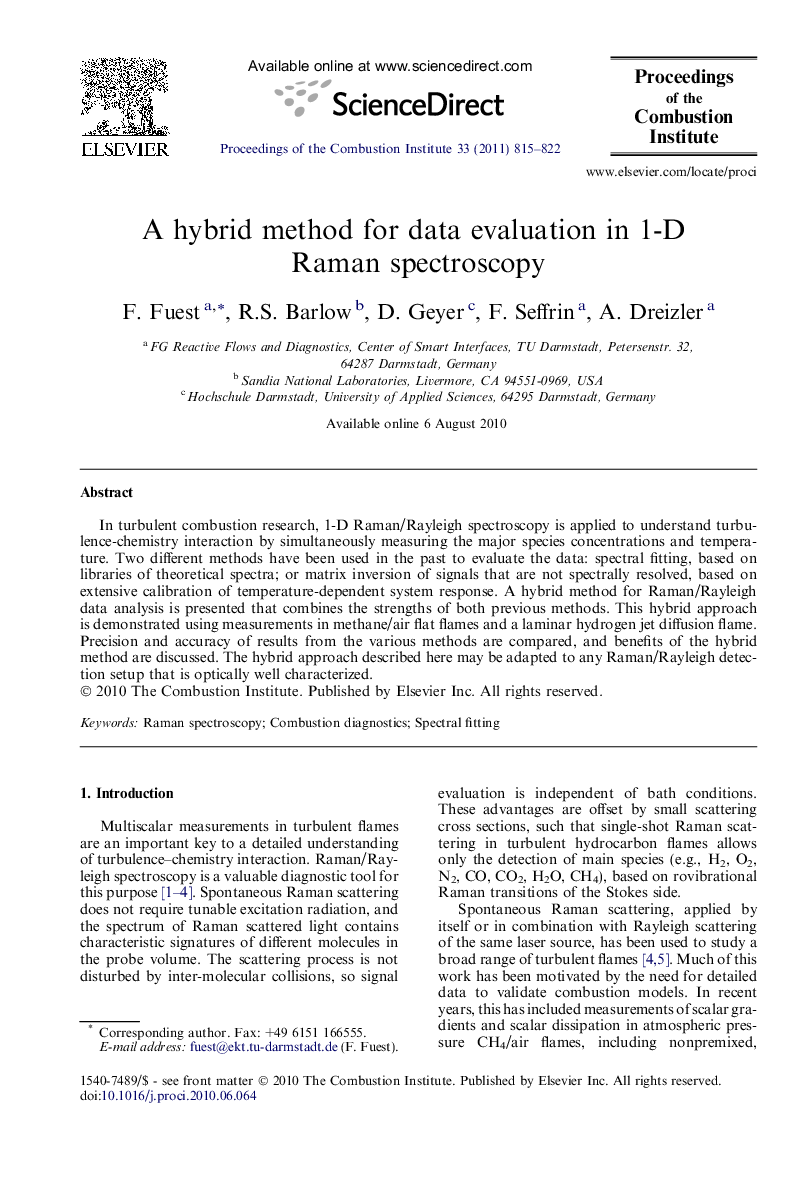| Article ID | Journal | Published Year | Pages | File Type |
|---|---|---|---|---|
| 241394 | Proceedings of the Combustion Institute | 2011 | 8 Pages |
In turbulent combustion research, 1-D Raman/Rayleigh spectroscopy is applied to understand turbulence-chemistry interaction by simultaneously measuring the major species concentrations and temperature. Two different methods have been used in the past to evaluate the data: spectral fitting, based on libraries of theoretical spectra; or matrix inversion of signals that are not spectrally resolved, based on extensive calibration of temperature-dependent system response. A hybrid method for Raman/Rayleigh data analysis is presented that combines the strengths of both previous methods. This hybrid approach is demonstrated using measurements in methane/air flat flames and a laminar hydrogen jet diffusion flame. Precision and accuracy of results from the various methods are compared, and benefits of the hybrid method are discussed. The hybrid approach described here may be adapted to any Raman/Rayleigh detection setup that is optically well characterized.
